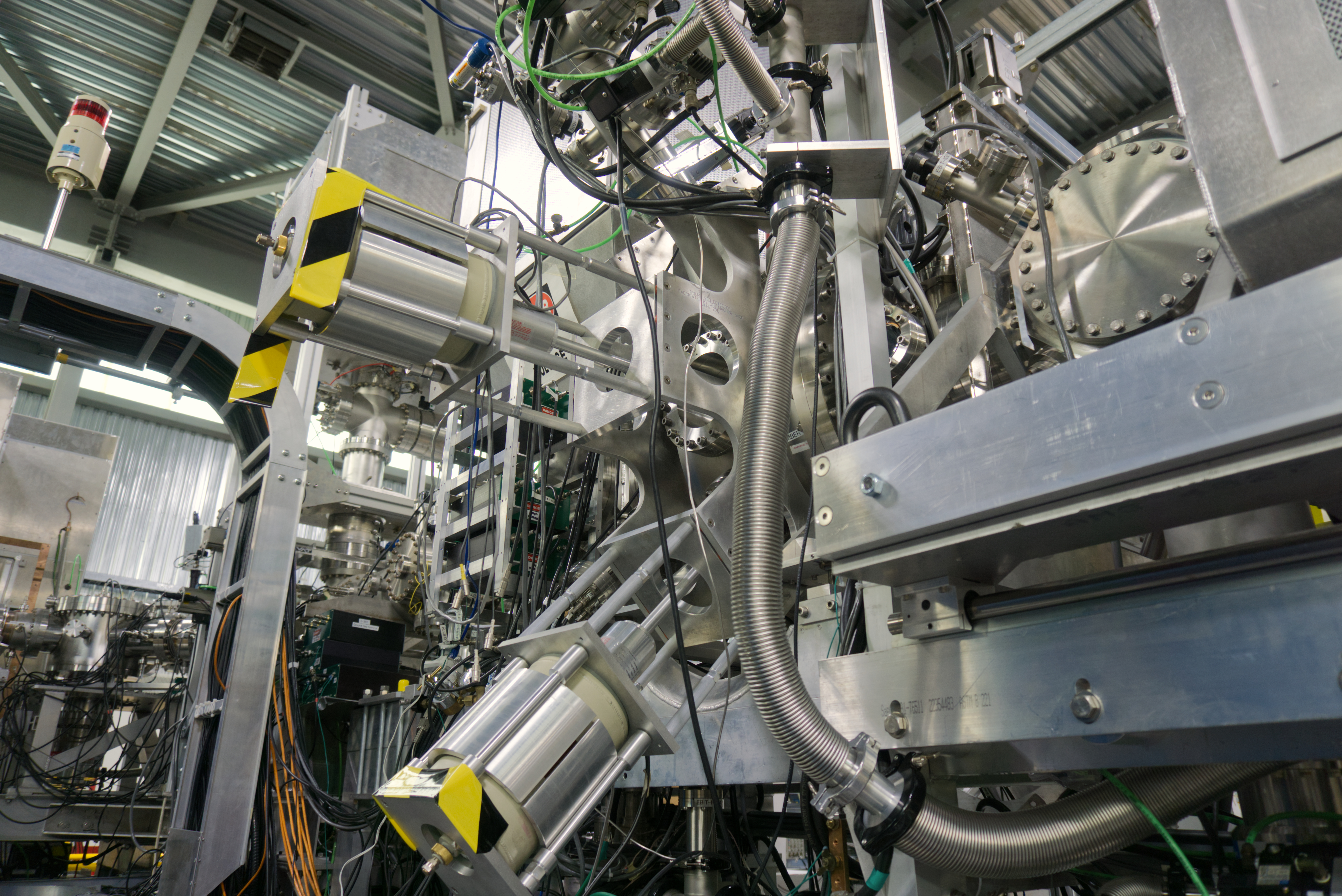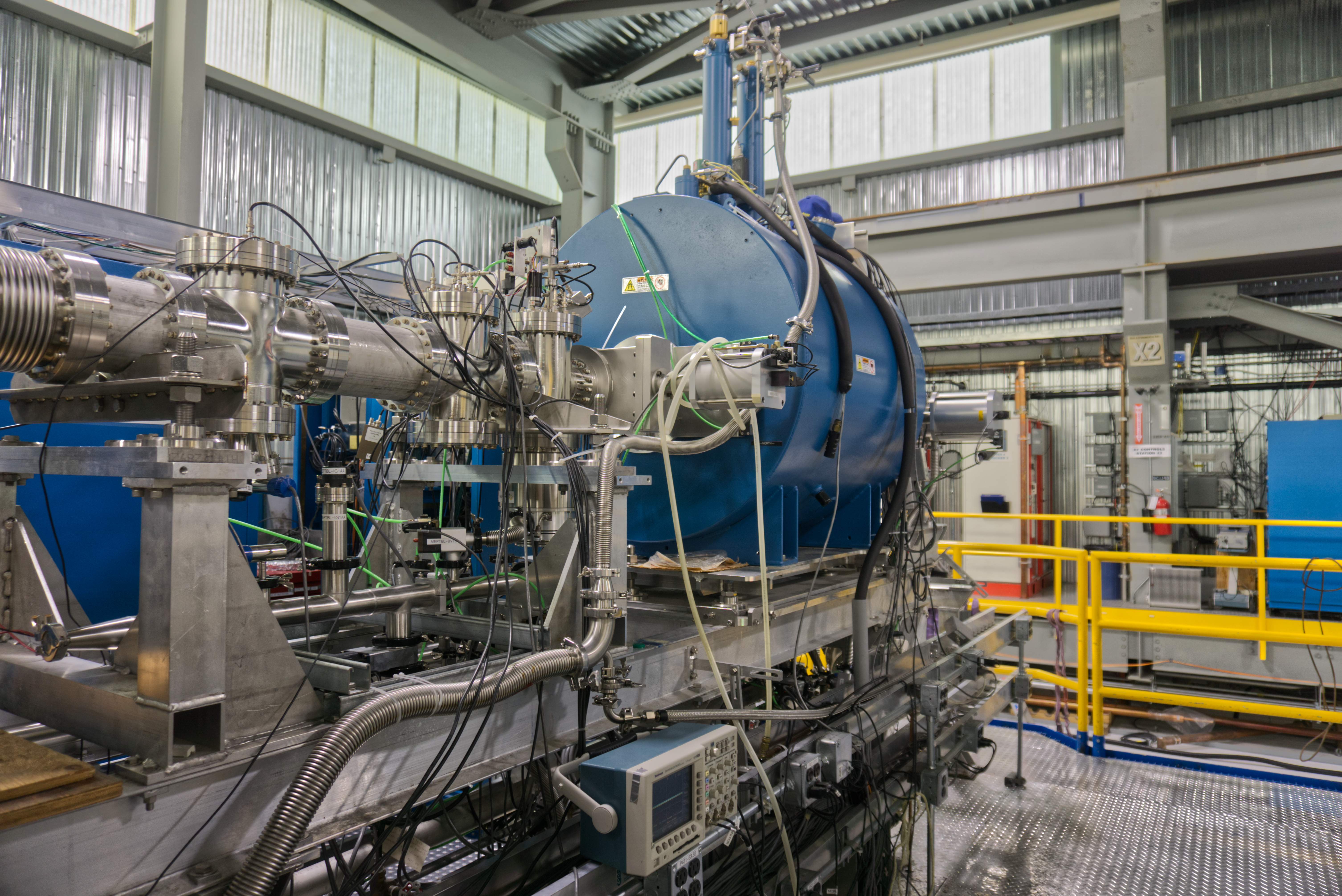Formation of Highly Charged Molecules
 Inspired by the extraordinary sensitivity for the eEDM in today's experiments working with
(stable) molecules, the present project envisions to exploit radioactive molecules as novel probes for new
physics beyond the Standard Model (SM). For example, by incorporating specific radionuclides into molecules, we
plan to combine the advantage of the intense internal electric fields of polar molecules with an enhanced
Schiff moment present in some radioactive nuclides, increasing the sensitivity to "nuclear EDMs" by up
to 1000-fold compared to spherical nuclei. Thus, the Schiff moment provides a way to probe the
nucleus itself for CP violating effects and its signature is further amplified in the molecule.
The Schiff moment is largely enhanced in atomic nuclei which exhibit octupole (‘pear shaped’)
deformation from the typical spherical shape. In the usual, spherical case, a nuclear electric dipole
moment causes the atomic electrons to rearrange themselves so that they develop an aggregate dipole
moment opposite that of the nucleus. This shields any information that could be obtained about the
nuclear EDM. In the case of a (large) Schiff moment however this shielding of the electron cloud is
incomplete, thus, enhancing the sensitivity for CP violation in these atomic nuclei. To date, all
known octupole deformed nuclei are ‘exotic' radionuclides which makes radioactive molecules
intriguing probes to search for new physics.
Inspired by the extraordinary sensitivity for the eEDM in today's experiments working with
(stable) molecules, the present project envisions to exploit radioactive molecules as novel probes for new
physics beyond the Standard Model (SM). For example, by incorporating specific radionuclides into molecules, we
plan to combine the advantage of the intense internal electric fields of polar molecules with an enhanced
Schiff moment present in some radioactive nuclides, increasing the sensitivity to "nuclear EDMs" by up
to 1000-fold compared to spherical nuclei. Thus, the Schiff moment provides a way to probe the
nucleus itself for CP violating effects and its signature is further amplified in the molecule.
The Schiff moment is largely enhanced in atomic nuclei which exhibit octupole (‘pear shaped’)
deformation from the typical spherical shape. In the usual, spherical case, a nuclear electric dipole
moment causes the atomic electrons to rearrange themselves so that they develop an aggregate dipole
moment opposite that of the nucleus. This shields any information that could be obtained about the
nuclear EDM. In the case of a (large) Schiff moment however this shielding of the electron cloud is
incomplete, thus, enhancing the sensitivity for CP violation in these atomic nuclei. To date, all
known octupole deformed nuclei are ‘exotic' radionuclides which makes radioactive molecules
intriguing probes to search for new physics.
 For these reasons, the goal of the Radioactive Molecules (RadMol) collaboration is to use a
combination of ion-trapping and laser spectroscopy to probe radioactive molecules for their
unprecedented sensitivity to nuclear T-breaking Schiff moments as well as other signatures for new
physics. TRIUMF is a leading international accelerator laboratory with the rare isotope production
capabilities required to form the molecular species of interest and is the intended site of the proposed
research. In addition, existing experimental infrastructure at TRIUMF provides a unique science
opportunity for studies of radioactive molecules and the RadMol collaboration. One such example is a
collaboration with TRIUMF’s Ion Trap for Atomic and Nuclear physics (TITAN) to use the electron
beam ion trap (EBIT) to charge breed the radioactive molecular species into higher charge states
(+2, +3). In obtaining higher charge states, one compresses the level structures, priming a system with
sensitivity.
For these reasons, the goal of the Radioactive Molecules (RadMol) collaboration is to use a
combination of ion-trapping and laser spectroscopy to probe radioactive molecules for their
unprecedented sensitivity to nuclear T-breaking Schiff moments as well as other signatures for new
physics. TRIUMF is a leading international accelerator laboratory with the rare isotope production
capabilities required to form the molecular species of interest and is the intended site of the proposed
research. In addition, existing experimental infrastructure at TRIUMF provides a unique science
opportunity for studies of radioactive molecules and the RadMol collaboration. One such example is a
collaboration with TRIUMF’s Ion Trap for Atomic and Nuclear physics (TITAN) to use the electron
beam ion trap (EBIT) to charge breed the radioactive molecular species into higher charge states
(+2, +3). In obtaining higher charge states, one compresses the level structures, priming a system with
sensitivity.